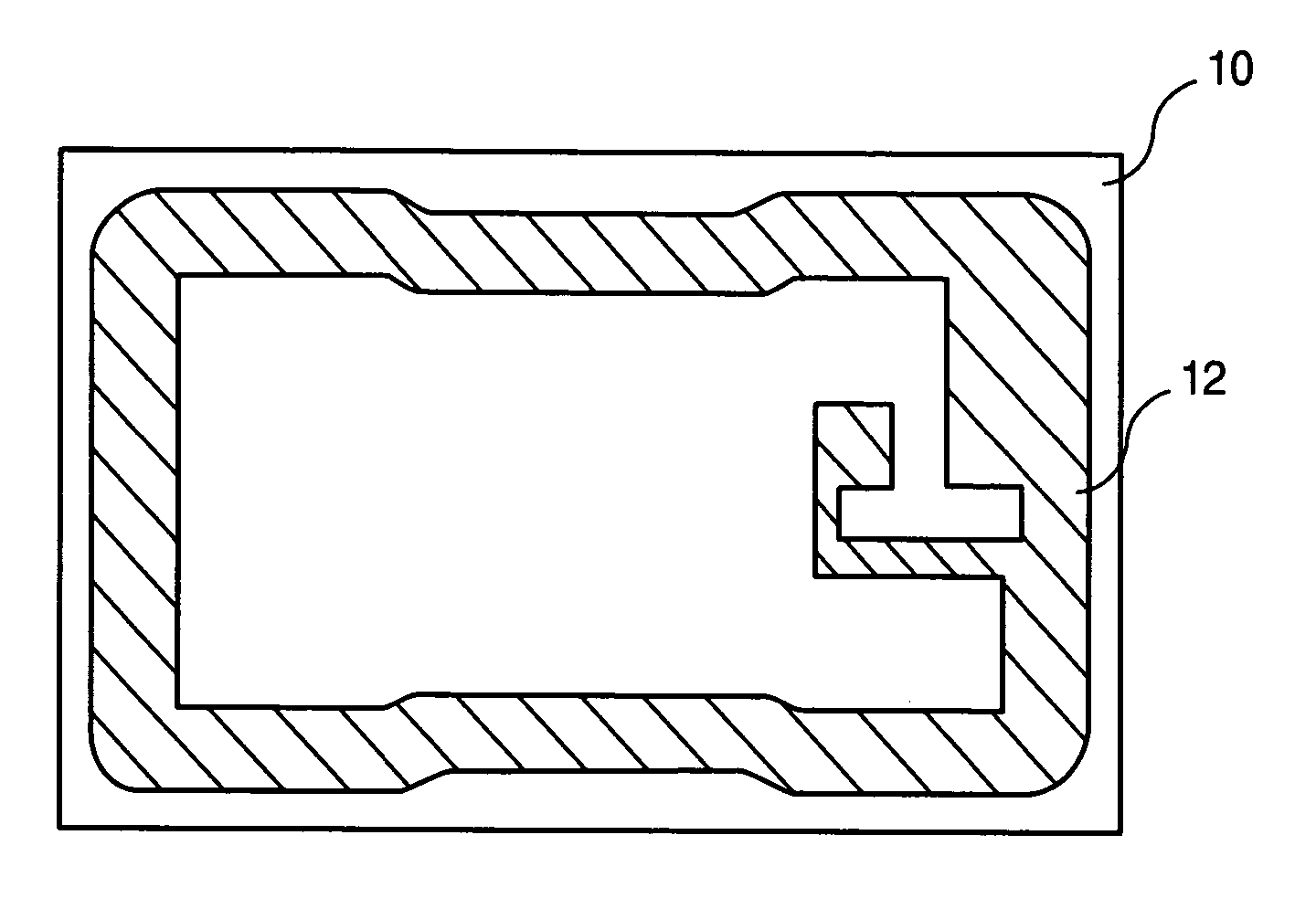Method for making a smart card antenna on a thermoplastic support and resulting smartcard
a technology of thermoplastic support and smart card, which is applied in the direction of casing/cabinet/drawer details, instruments, casings/cabinets/drawers, etc., can solve the problems of difficult manufacturing of electronic modules and antennas, inability to maintain the shape factor of antennas, and increased manufacturing costs
- Summary
- Abstract
- Description
- Claims
- Application Information
AI Technical Summary
Benefits of technology
Problems solved by technology
Method used
Image
Examples
Embodiment Construction
[0020] According to FIG. 1, resin is deposited on the antenna support 10 made of thermoplastic material of a hybrid contact-contactless smart card on a zone 12 corresponding to the location of the antenna and connection pads of the antenna with the module. The details of the shape of the zone 12 do not constitute a limitation for the invention, the main constraint being that the zone 12 defines the location where the conductive ink forming the turns and the connection pads of the antenna will be printed afterwards. Zone 12 is preferably slightly larger than the antenna's imprint as can be seen on the following FIGS. 2 and 5. The thickness of the resin layer applied is of the order of 5 μm.
[0021] According to a preferred embodiment of a hybrid contact-contactless smart card antenna shown in FIG. 2, the antenna is screen printed on zone 12 of the antenna support 10 in several passes and in reverse order compared with the standard screen printing method. The first pass consists in scr...
PUM
 Login to View More
Login to View More Abstract
Description
Claims
Application Information
 Login to View More
Login to View More - R&D
- Intellectual Property
- Life Sciences
- Materials
- Tech Scout
- Unparalleled Data Quality
- Higher Quality Content
- 60% Fewer Hallucinations
Browse by: Latest US Patents, China's latest patents, Technical Efficacy Thesaurus, Application Domain, Technology Topic, Popular Technical Reports.
© 2025 PatSnap. All rights reserved.Legal|Privacy policy|Modern Slavery Act Transparency Statement|Sitemap|About US| Contact US: help@patsnap.com



